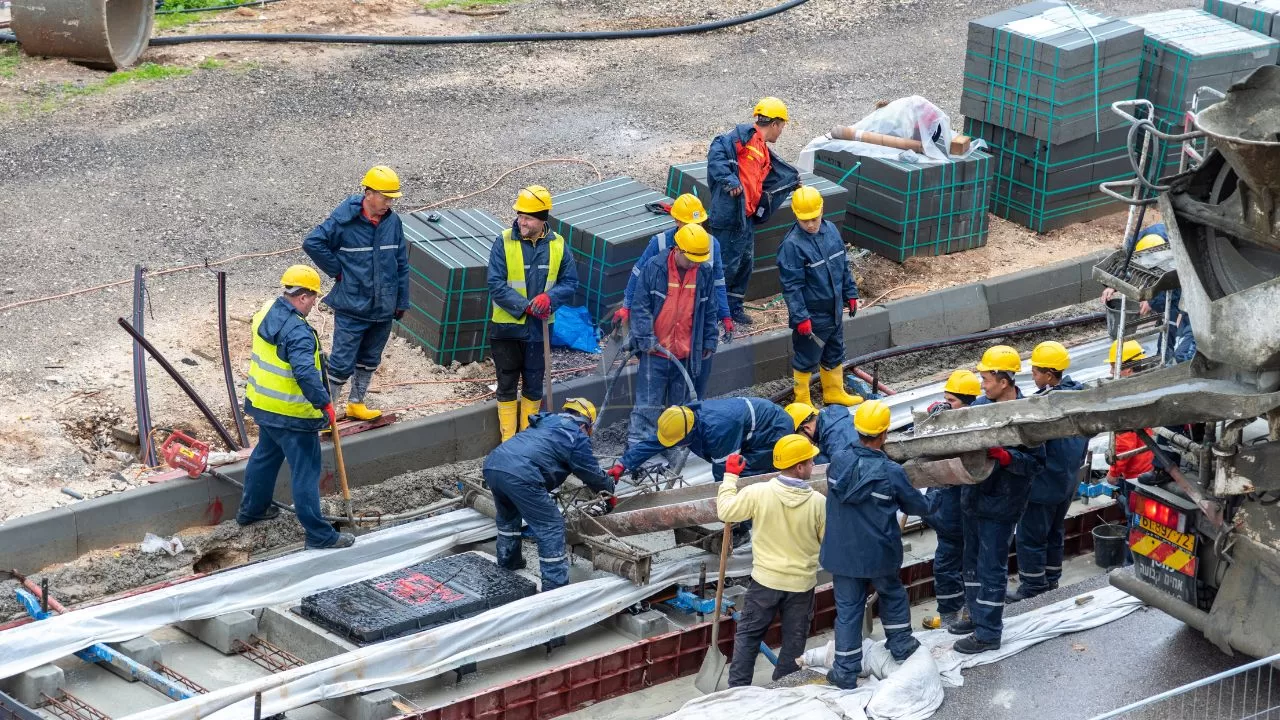Types of Gauges in railway is a mandatory topic to touch upon when you study railway engineering. In this article, I will take you on a journey through the three basic types of railway gauges: broad gauge, metre gauge, and narrow gauge.
- What is gauge in railway?
- Types of Gauges in railway
- Factors affecting the choice of types of gauges in railway
What is gauge in railway?
The gauges in railway is defined as the clear minimum perpendicular distance between the inner faces of the two rails. The distance between the inner faces of a pair of wheels is called wheel gauge.
The figure below is a diagrammatic representation of gauges in railway.
Now, let’s jump right on to the various types of gauges in railway.
Some related posts from Vincivilworld
Types of Gauges in railway
There are 3 major types of gauges in railway.
- Broad gauge
- Metre gauge
- Narrow gauge
I will tell you more details about each of them in the upcoming sections. Let’s start with broad gauge.
Broad gauge
When the clear horizontal distance between the inner faces of two parallel rails forming a track is 1.676m, the gauge is called broad gauge. Also known as standard gauge in some countries.
Broadest gauge is used for tracks in plain areas which are densely populated for routed of maximum traffic at places which are centers of industry and commerce.
Suitability: Broad gauge is suitable under the following conditions
- When sufficient funds are available for the railway project
- When the prospects of revenue are very bright
So, you got an idea about broad gauges. Let’s look into metre gauge now.
Metre gauge
Metre gauges are used when the clear horizontal distance between the inner faces of two parallel rails forming a track is 1m. It is used for tracks in under- developed areas and in interior areas where traffic intensity is small and prospects for future development are not very bright.
Suitability: Metre gauge is suitable under the following conditions;
- When the funds available for the railway project are inadequate
- When the prospects of revenue are not very bright.
That’s it about metre gauge. Next, let me give you some information about narrow gauge.
Narrow gauge
Narrow gauge is leveraged when the clear horizontal distance between the inner faces of two parallel rails forming a track is either 0.762m or 0.610m. These are used in hilly and very thinly populated areas.
Suitability: Narrow gauge is suitable under the following conditions:
- When the construction of a track with wider gauge is prohibited due to the provision of sharp curves, steep gradients, narrow bridges and tunnels, etc.
- When the prospects of revenue are not very bright.
You have seen all types of gauges in railway. Did you know the factors that should be taken into account while selecting a gauge? Its time to see that.
Factors affecting the choice of types of gauges in railway
- Traffic condition: If the intensity of traffic on the track is likely to be more, a gauge wider than the standard gauge is suitable.
- Development of poor areas: The narrow gauges are laid in certain parts of the world to develop a poor area and thus link the poor area with the outside developed world
- Cost of track: The cost of railway track is directly proportional to the width of its gauge. If the fund available is not sufficient to construct a standard gauge, a metre gauge or a narrow gauge is preferred rather than to have no railways at all
- Speed of movement: The speed of a train is a function of the diameter of wheel which in turn is limited by the gauge. The wheel diameter is usually about 0.75 times the gauge width and thus, the speed of a train is almost proportional to the gauge. If higher speeds are to be attained, the broad gauge track is preferred to the metre gauge or narrow gauge track.
- Nature of country: In mountainous country, it is advisable to have a narrow gauge of the track since it is more flexible and can be laid to a smaller, radius on the curves. This is the main reason why some important railways, covering thousands of kilometres, are laid with a gauge as narrow as 610mm
- Gauge should be uniform and correct: Uniformity of gauge is necessary due to the following reasons:
- Inconvenience to the passengers while changing the train at the station, with the change of gauge:
- Delay in the movement of people and goods resulting in wastage of time
- Extra labour for unloading and reloading the goods
- The goods are also likely to be damaged or dislocated at the junction station, having a change of gauge.
- Provision of extra and costly yards, godowns, sheds, etc. At every junction station having a change of gauge. Difficulty in quick movement of military and equipment during war days.
So, you got to know everything about gauges in railways? Did I miss out anything? Let me know your thoughts in the comments.
MUST READ: Types of rails- 3 types full details with figures




5 thoughts on “Types of Gauges in railway- Broad Gauge, Metre and Narrow Gauges”
Comments are closed.